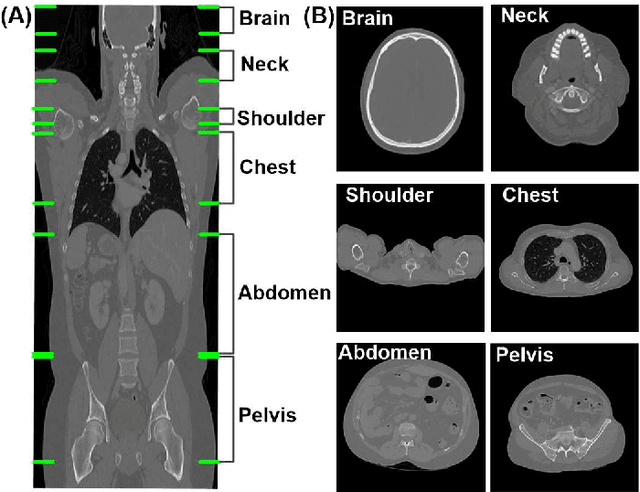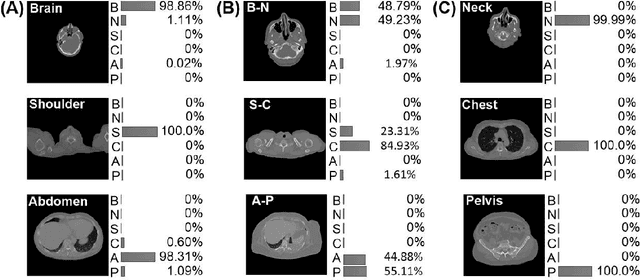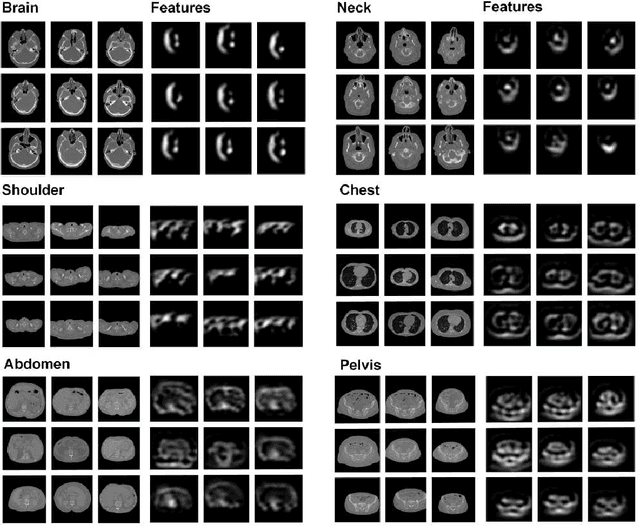Synho Do
Integrating ChatGPT into Secure Hospital Networks: A Case Study on Improving Radiology Report Analysis
Feb 14, 2024



Abstract:This study demonstrates the first in-hospital adaptation of a cloud-based AI, similar to ChatGPT, into a secure model for analyzing radiology reports, prioritizing patient data privacy. By employing a unique sentence-level knowledge distillation method through contrastive learning, we achieve over 95% accuracy in detecting anomalies. The model also accurately flags uncertainties in its predictions, enhancing its reliability and interpretability for physicians with certainty indicators. These advancements represent significant progress in developing secure and efficient AI tools for healthcare, suggesting a promising future for in-hospital AI applications with minimal supervision.
Machine Friendly Machine Learning: Interpretation of Computed Tomography Without Image Reconstruction
Dec 03, 2018



Abstract:Recent advancements in deep learning for automated image processing and classification have accelerated many new applications for medical image analysis. However, most deep learning applications have been developed using reconstructed, human-interpretable medical images. While image reconstruction from raw sensor data is required for the creation of medical images, the reconstruction process only uses a partial representation of all the data acquired. Here we report the development of a system to directly process raw computed tomography (CT) data in sinogram-space, bypassing the intermediary step of image reconstruction. Two classification tasks were evaluated for their feasibility for sinogram-space machine learning: body region identification and intracranial hemorrhage (ICH) detection. Our proposed SinoNet performed favorably compared to conventional reconstructed image-space-based systems for both tasks, regardless of scanning geometries in terms of projections or detectors. Further, SinoNet performed significantly better when using sparsely sampled sinograms than conventional networks operating in image-space. As a result, sinogram-space algorithms could be used in field settings for binary diagnosis testing, triage, and in clinical settings where low radiation dose is desired. These findings also demonstrate another strength of deep learning where it can analyze and interpret sinograms that are virtually impossible for human experts.
Practical Window Setting Optimization for Medical Image Deep Learning
Dec 03, 2018



Abstract:The recent advancements in deep learning have allowed for numerous applications in computed tomography (CT), with potential to improve diagnostic accuracy, speed of interpretation, and clinical efficiency. However, the deep learning community has to date neglected window display settings - a key feature of clinical CT interpretation and opportunity for additional optimization. Here we propose a window setting optimization (WSO) module that is fully trainable with convolutional neural networks (CNNs) to find optimal window settings for clinical performance. Our approach was inspired by the method commonly used by practicing radiologists to interpret CT images by adjusting window settings to increase the visualization of certain pathologies. Our approach provides optimal window ranges to enhance the conspicuity of abnormalities, and was used to enable performance enhancement for intracranial hemorrhage and urinary stone detection. On each task, the WSO model outperformed models trained over the full range of Hounsfield unit values in CT images, as well as images windowed with pre-defined settings. The WSO module can be readily applied to any analysis of CT images, and can be further generalized to tasks on other medical imaging modalities.
How much data is needed to train a medical image deep learning system to achieve necessary high accuracy?
Jan 07, 2016



Abstract:The use of Convolutional Neural Networks (CNN) in natural image classification systems has produced very impressive results. Combined with the inherent nature of medical images that make them ideal for deep-learning, further application of such systems to medical image classification holds much promise. However, the usefulness and potential impact of such a system can be completely negated if it does not reach a target accuracy. In this paper, we present a study on determining the optimum size of the training data set necessary to achieve high classification accuracy with low variance in medical image classification systems. The CNN was applied to classify axial Computed Tomography (CT) images into six anatomical classes. We trained the CNN using six different sizes of training data set (5, 10, 20, 50, 100, and 200) and then tested the resulting system with a total of 6000 CT images. All images were acquired from the Massachusetts General Hospital (MGH) Picture Archiving and Communication System (PACS). Using this data, we employ the learning curve approach to predict classification accuracy at a given training sample size. Our research will present a general methodology for determining the training data set size necessary to achieve a certain target classification accuracy that can be easily applied to other problems within such systems.
 Add to Chrome
Add to Chrome Add to Firefox
Add to Firefox Add to Edge
Add to Edge